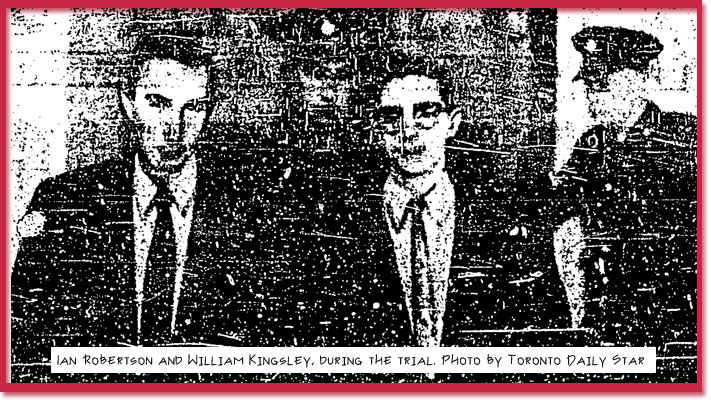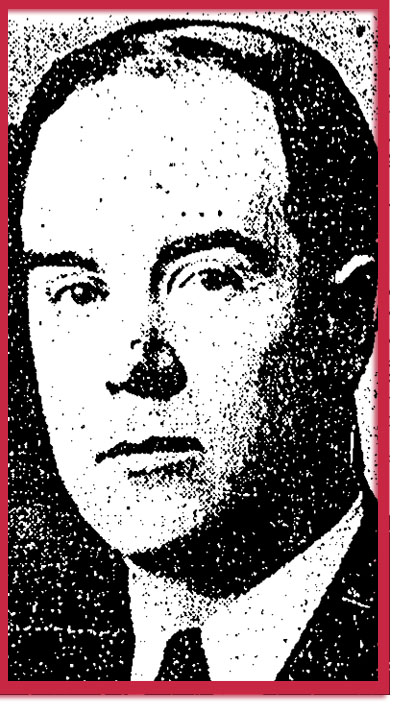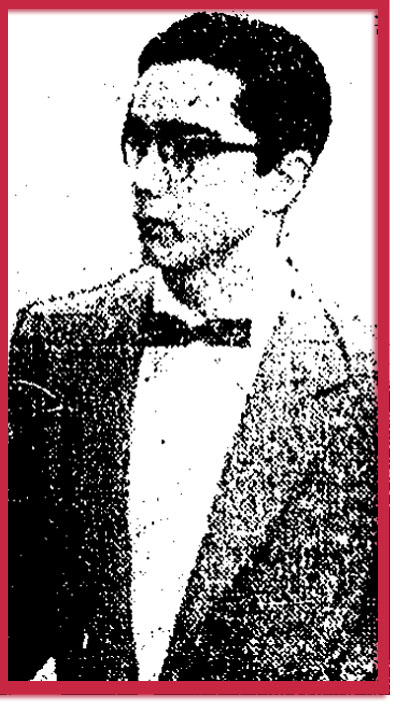
On October 29, 1953, when the body of a man was found in a field riddled with bullet holes and without identification, and before advanced forensics, it was the laundry marks on a shirt that helped police find the name of their victim.
Fred “Scotty” Cameron was a messenger for a Toronto investment brokerage firm and had worked for the company for years. He was 57 years old and, on the night of October 29, 1953, he was shot to death.
Cameron, who was shot five times, was found by Robert Cowan, a passing farmer who notified provincial police. Toronto police were enlisted to help the Ontario Provincial Police when the OPP discovered a TTC ticket in Cameron’s pocket.
Cameron was well-trusted by the brokerage firm to carry mail and other documents on their behalf to other brokerages, trust companies, and banks. However, he did not carry money. In fact, Cameron had not drawn his pay the evening before, and police said he had only $14. However, his pockets were turned out, and his watch was missing.
Initially, Cameron was painted as a ladies man who lived frugally, although the suit he was killed in cost $110. He never kept any identification on him, and did not talk about his past. He was described as “a shrewd, secretive and uncommunicative sort” but well-liked.
Cameron’s friend, John Quigley, told media “Cameron seemed more inwardly disturbed than ever – as though he had a premonition of a violent end. He would say to me, ‘If I’m ever in a tight spot, I’ll put up a fight.'” Quigley said he had a cheeky sense of humour and would help out people “from the Old Country,” Scotland.
Cameron lived on Isabella St., in what is now the Gay Village. He was married, but had been separated from his wife for 10 years and often referred to himself as a widower.
On November 4, police offered a $1,000 reward in Cameron’s death. On November 5, 1953, police took two Toronto men into custody, Francis Ian Robertson, 21 and William Stephen Kingsley, 19, but both were released after questioning.
The provincial pathologist Dr. Chester McLean said the bullet wounds were widely spaced apart, with one entering the neck and mouth, two in the left front chest, one in the back and one in the head. The last shot, in his forehead, killed him.
Police took Cameron’s clothing and personal effects found on him, including his light purple socks, a TTC streetcar ticket and two movie house ticket stubs.

On November 11 police returned to the Stroud scene and used a Canadian Army mine detector to recover parts of the .32 Savage automatic pistol used to shoot Cameron.
Kingsley was rearrested at “an old tenement” and charged on November 25. Robertson, who had a 17-year-old wife and a son, was rearrested the same day after returning from a his job. Police also confiscated Robertson’s father’s car. It had blood on the outside and in the trunk. Robertson had borrowed the car to “go North for Thanksgiving.”
On February 4, 1954, the two men jointly stood trial in a Barrie court room.
The Crown attorney said during the trial “How could two young men get a man of Cameron’s age to go for a ride in the country? It is sad but true that some men are afflicted with homosexuality.” Kingsley said in his statement to police that he and Cameron had previously had a sexual relationship for three years, making him 15 when it started. That relationship was later described by a defence attorney in court as “filthy, degrading acts of a weak mind. The filthy acts of a sex pervert were responsible for this tragedy.”
Kingsley said he shot Cameron once outside Karry’s poolhall at Queen and Yonge in Toronto, and he and Robertson placed Cameron into the trunk of the car. Cameron was still alive, pounding on the trunk and shouting. “Cameron was yelling in the trunk of the car, yelling and yelling and yelling. It was awful to hear him yell. It scared me,” Kingsley said.
Upon arriving at their destination, the two young men opened the trunk, and Cameron came out swinging. He was shot again. “We’ve got to make it look like a gang killing to get away with it,” Robertson said, directing Kingsley to go through Cameron’s pockets. It was Kingsley who, after taking the gun back, would shoot Cameron in the forehead.
“I’ll bet that’s the first time anyone shot a man for $14,” Robertson is alleged to have said to Kingsley shortly after the murder.
Robertson, who changed his story a number of times, said in court that Cameron was a pervert who “made advances” while they were driving north. The trio stopped because of car trouble, and he and Cameron got into a fight. “The next thing I knew there were several shots… Cameron’s falling down quite startled me,” Robertson said in court. He said he never shot the gun, only Kingsley did.

Crown prosecutor W.M. Thompson said Cameron “was a human being, entitled to live and it is not the law a man can be killed because he is a homosexual. He might have been cured or imprisoned, but death is not the answer.”
On March 17, 1954, it took the jury just eight hours to find the pair not guilty of murder, but guilty of manslaughter, thus escaping the death penalty. Each was given a 20 year sentence.
Murder Village Map
Vital Statistics
Name: Fred “Scotty” Cameron
Age: 57
Gender: Male
Date of Death: October 29, 1953
Manner of Death: Shot
Location: Stroud, ON
Suspect Name: Francis Ian Robertson, William Stephen Kingsley
Conviction & Sentence: Manslaughter, 20 years before a chance of parole
